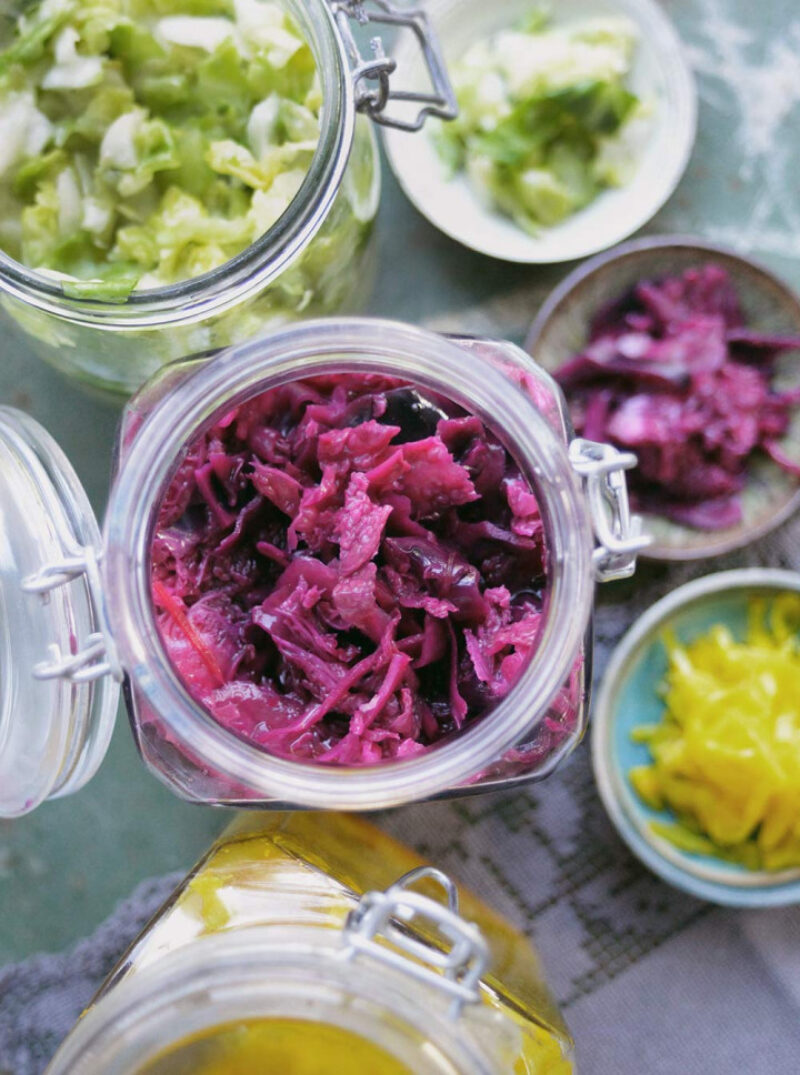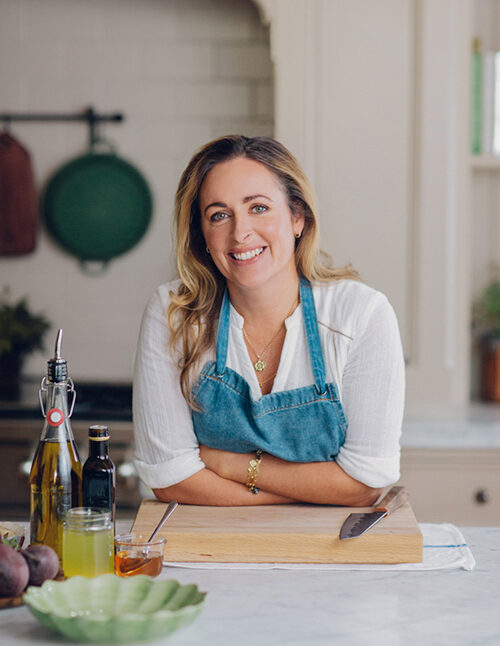
Makes 1 jar
Homemade Sauerkraut
To make sauerkraut, cabbage is fermented by bacteria to give it a delicious sour taste. Sauerkraut contains fibre, vitamins and minerals, and live bacteria similar to that found in yoghurt and kefir. The fermentation process makes the cabbage more digestible when we eat it so our intestines can extract more nutrients from it than it might have done when it was raw.
Sauerkraut is easy to make at home and fun to experiment with. It might take a few batches to discover how it works best for you. It is important that you use organic vegetables so that no chemicals can interfere in the fermentation process. The same goes for salt, use pure sea salt free from anti-caking agents or iodine. I use Malden flakes.
YOU’LL NEED
- 1 x large Kilner jar – sterilized in the dishwasher or very hot water
- 1 x smaller jam jar (or drinking glass) that fits inside the neck of the bigger jar, sterilized as above
- A large ceramic or glass mixing bowl
INGREDIENTS
- 1 medium (organic) cabbage – try pointed, white, savoy or red (about 500g)
- 4 tsp sea salt
Flavour suggestions:
- Red cabbage with savoy or white cabbage makes a beautiful ‘pinkraut’
- White or savoy cabbage and caraway seeds
- White or Savoy cabbage with turmeric, garlic and ginger
- Cabbage and carrots
- Carrots and ginger
STEP-BY-STEP
Core and slice the cabbage into a bowl, add the salt and squeeze the cabbage with your hands. You should see a reduction in volume after a few minutes as the salt encourages the liquid out of the cabbage and it begins to wilt.
Keep going until you have plenty of liquid then pack the cabbage and its liquid into the jar, pushing it right down until the liquid rises up over the cabbage. I use the base of a smaller jar or glass to push it down. It is important that the cabbage remain under the liquid level while it ferments so top up with a little water if it’s not wet enough but the volume will reduce as it ferments, so it becomes easier.
Fill the small jar with water and leave on top as a weight to keep the cabbage underwater, leave the Kilner jar open but cover with a piece of muslin and leave to stand at room temperature somewhere it won’t be disturbed.
After a day you should see bubbles rising up, check the cabbage is submerged and push down again. Depending on your kitchen, the season and where you live, getting to the right stage of fermentation could take a couple of weeks, if it is very cold, longer. After a week, taste a little every few days and when it is tangy enough for your liking, close the lid and store in the fridge.
MORE TO EXPLORE
Please note: Although we do our best to ensure that recipes are correctly tagged according to ingredients, potential benefit, dietary requirements, type of dish or other filter, this is a manual process and errors may occur. Please therefore take care to thoroughly review the listed ingredients and method before commencing cooking to ensure none of the ingredients or methods given may cause adverse effects to anyone consuming the food. We do not provide any assurances nor accept any responsibility or liablity with regard to the originality, efficacy, quality or safety of recipes or articles.
This website uses some carefully selected affiliate links. If you buy through these links, we may earn an affiliate commission, at no additional cost to you. This helps to keep all of our online content free for everyone to access. Thank you for your support as every little helps.




